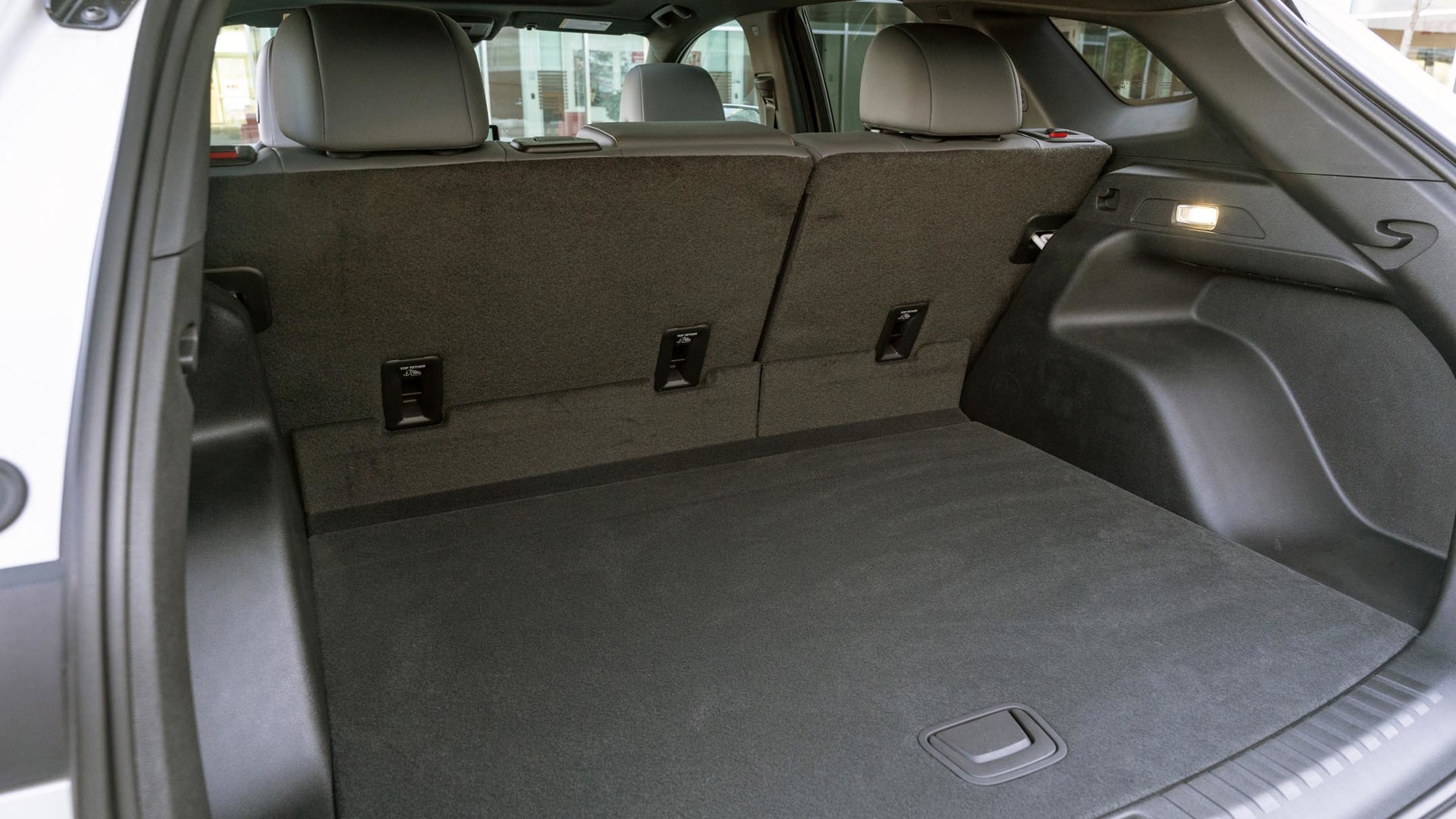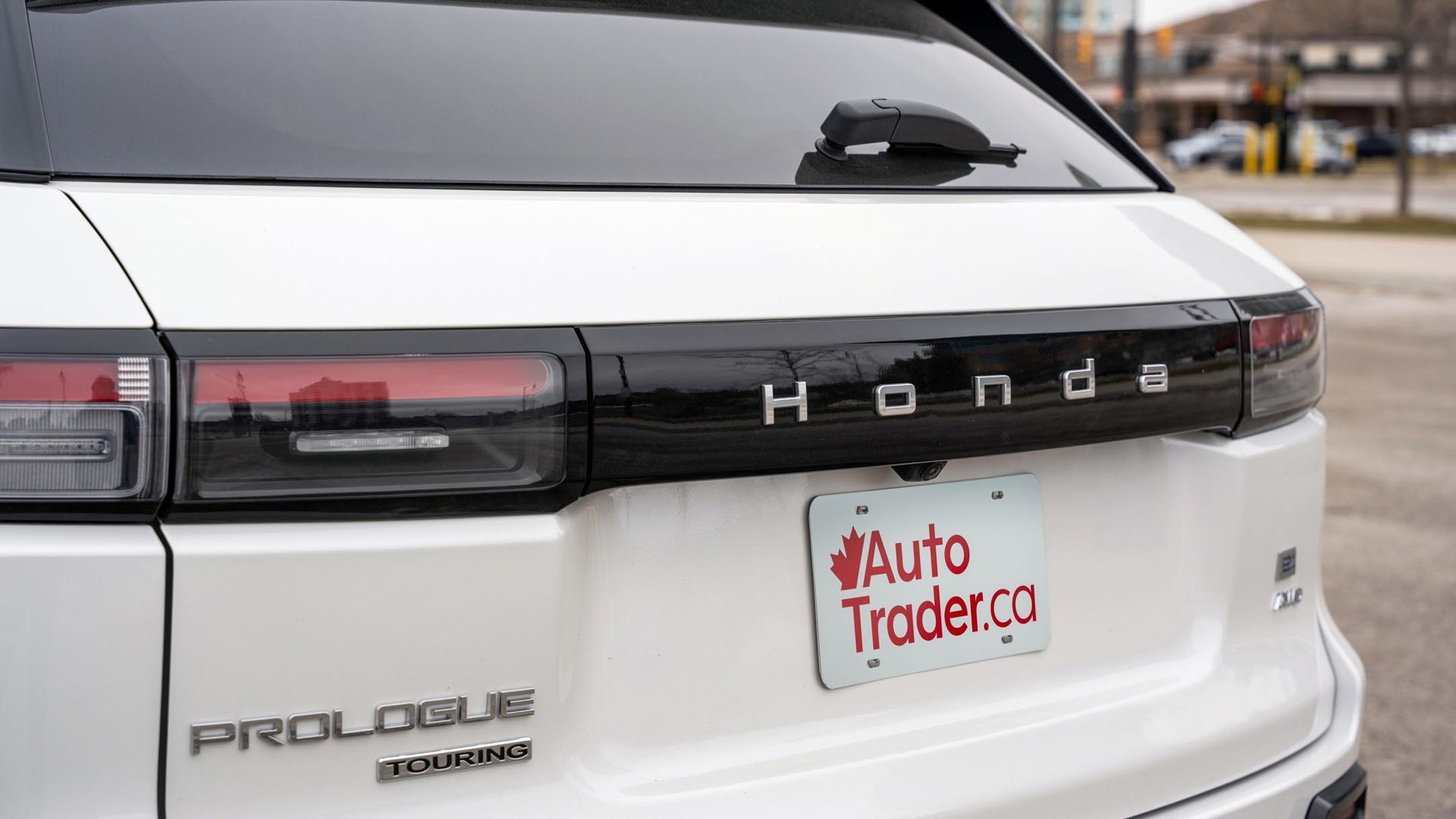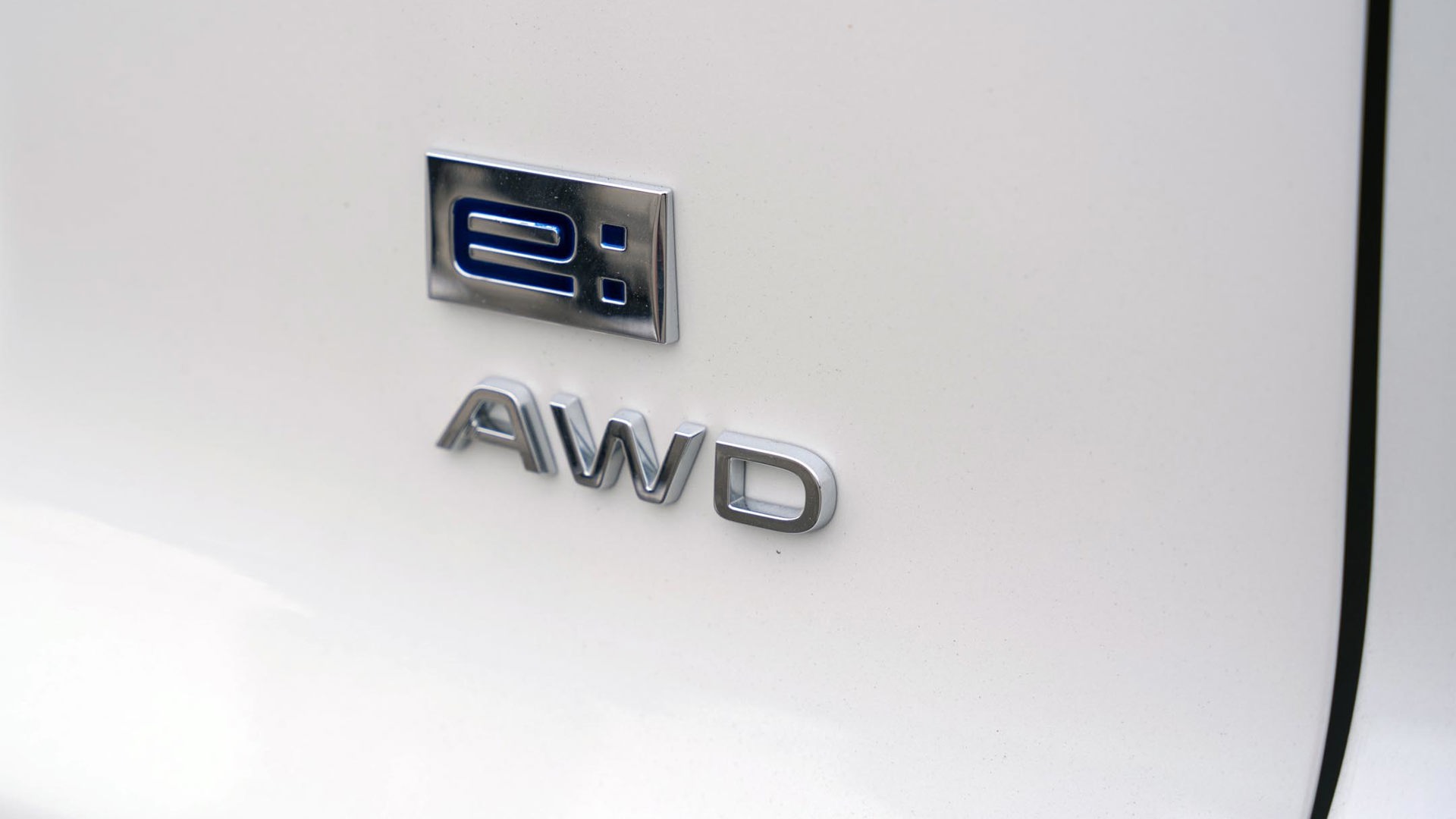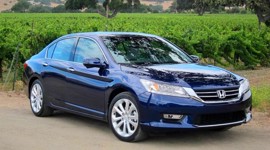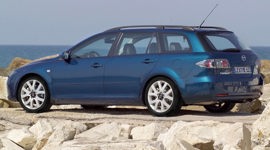There are benefits to being fashionably late.
For one, it shows you’re not too eager, and it can build anticipation too. That seems to be the case with the arrival of Honda’s new electric vehicle (EV) that’s joining a growing segment of mainstream offerings like it.
Until now, Honda fans wanting to hobnob at their local charging station had to do so wistfully. But with the 2024 Honda Prologue striding confidently into the EV soiree, that all changes.
Suave Style
The Prologue is well-dressed on arrival. Where some of the other attendees are trying really hard to make an impression with their ultra-trendy fashions (yes, we all noticed you Hyundai Ioniq 5 and Nissan Ariya), Honda has shown up wearing a classic suit that’s well tailored with great proportions and clean lines.
The wheels (21-inch on our Touring tester) are pushed out to the corners of the platform, plus the squat greenhouse and horizontal lighting and trim front and rear give it a broad-shouldered look. There are some on-trend features, like spelling out the Honda name across the back end instead of using a traditional badge, but this is a handsome machine overall that shouldn’t go out of vogue by the start of the next season.
Intelligent Interior
Honda’s designers continued with the sensible-style design brief inside. The dash follows a fairly generic layout with a large, high-mounted central infotainment screen and a second, smaller rectangular instrument display, but nothing overly dramatic or memorable in terms of shapes or flourishes. It would’ve been nice to see Honda incorporate the mesh-like treatment it’s used for the vents in other current-generation models that’s distinctive and effective instead of opting for spans of smudge-prone gloss-black plastic. In fact, the cabin design overall is let down with a drab black-and-grey palette and more hard, chintzy plastics throughout than one might expect in a machine like this.
On the bright side, those materials are likely to prove durable over time, and easy to clean. Perhaps more importantly, the switchgear is very sensibly laid out. A round of applause, please, for Honda’s decision to put actual buttons for climate controls and seat heaters inside its EV rather than incorporating them into a screen. And instead of tedious haptic touch panels, temperature and volume controls are managed by knobs.
The infotainment system features a sensible menu system, a native Google operating foundation, and wireless Android Auto and Apple CarPlay compatibility.
In typical Honda fashion, the cabin has had every possible space scooped out for useful cubbies and nooks. The gear selector has been relocated from the console to a column stalk, allowing for acres of real estate for cup holders, a place to put a couple of phones (right below a pair of USB-C charge ports, no less), and a wireless charger that situates one’s phone vertically and far enough back to reduce temptation of use while driving. There’s a lower level of open space on the console, too, and the compartment below the arm rest is larger than some EVs’ frunks.
Incidentally, the Prologue has no frunk at all, and its rear cargo area is about mid-pack at 714 L, trailing the Toyota/Subaru twins, and the Volkswagen ID.4, but besting the Ariya and the Kia EV6. Fold the 60/40 split rear seat and the space grows to 1,634 L, which is also about mid-pack. There’s a deep recess below the rear cargo floor that will swallow an extra 14 L of stuff. Rated at 680 kg (1,500 lb), the Prologue could haul a small utility trailer, but don’t plan to tow your wake boat to the cottage with it.
The Prologue’s front seats offer good comfort but feel neither luxuriously supple nor overly bolstered for spirited driving. They’re sensible seats – nothing more, nothing less. The rear bench has seat belts for three abreast, and while headroom is decent, the legroom is gargantuan thanks to a super-stretched wheelbase.
Familiar Platform
At 3,094 mm (121.8 in), that wheelbase is just as long as the Chevrolet Blazer EV‘s, which is no coincidence since the Honda Prologue rides on the same platform. In fact, the scalable Ultium underpinnings are the backbone for not only the Prologue and Blazer EV, but a whole range of new electric Cadillacs, full-size electric pickups, and even a commercial delivery van.
The Blazer EV and Prologue are assembled on the same Mexican production line, and use the same 85-kWh battery packs and pair of electric motors. Obviously aware of the early software glitches Chevrolet has had with early Blazer EV deliveries, Honda’s product experts assured us that all shared components have needed to meet Honda’s usually lofty quality levels, and that above the base electrified platform, the body, interior, and items like the infotainment system are mostly from Honda suppliers. Fingers crossed that early Prologue examples have a smooth welcome at the party.
Driving Impressions
While a single-motor, front-drive variant is available in the United States, Canadian Prologues are all dual-motor, all-wheel-drive versions. Combined, these motors provide 288 hp and 333 lb-ft of torque. That’s enough motivation to get the Prologue across intersections smartly, and up to highway speed with ease. While not providing the hair-raising acceleration of high performance (and high dollar) EVs, the Prologue nevertheless has enough poke for easy passing, but feels pretty much the same as any of its direct competitors. Such is the anodyne nature of most EVs.
Honda offers a one-pedal drive mode with two levels of intensity. In its stronger setting, it can make for some very abrupt transitions on-and-off the throttle, especially at low speeds. The normal setting is much easier to work with, while still recuperating plenty of energy off-throttle, and if more aggressive regen is desired briefly (say when rapidly slowing at highway speeds), a steering wheel-mounted paddle can call upon the stronger setting whenever desired.
Steering is very boosted and nearly completely absent of any road feel (again, a trait we’ve found common to all the EVs in the class). While not likely to kick up its heels and dance at this shindig, the Prologue’s handling is adept with good body control, and even wearing winter tires, maintained a strong grip and composure on the few curves and roundabouts we hustled the Prologue on during our test drive.
Where the Prologue stands out is its ride quality. Even wearing the Touring trim’s big wheels and low-profile tires, the frost-heaved Ontario roads were impressively smoothed out by the Honda’s impressive on-road refinement, feeling like a costlier machine with a fancy adaptive suspension. Add to that the absence of engine noise, its well-suppressed road noise, and little wind noise, and the Prologue becomes very easy to get along with.
Range and Charging
It does a decent job of covering a fair amount of ground, too. In EX and EX-L trims (wearing smaller 19-inch wheels), the Prologue is rated for up to 452 km of range, surpassing all its primary competitors with the exception of the Tesla Model Y. The Touring trim drops to a still very competitive 439 km range, and yet during our mid-winter drive day, the computer showed an estimated range of 444 km to start with a full charge. As our drive mixed sustained highway driving with country roads and some urban driving, we observed the computer’s estimate to be quite accurate, meaning the Prologue may have an easier time achieving or surpassing its official range than some of the competitors.
The Prologue is able to handle DC fast-charging rates up to 155 kW, which Honda claims can add more than 100 km of range in roughly 10 minutes. Such claims can be optimistic, with too much of the Canadian public charging infrastructure remaining inconsistent at best, but to its credit, Honda has partnered with several other carmakers to develop an expansive new charging infrastructure across the U.S. and Canada in the coming years. Additionally, Honda is offering the Prologue with a Tesla-style plug adaptor, enabling access to that brand’s Supercharger network.
Final Thoughts
Starting at $59,990 for the well-equipped EX model (EX-L is $64,990 and $69,990 for Touring), Honda has priced the Prologue competitively and ensured it squeaks under the threshold for the $5,000 federal tax rebate, as well as provincial and territorial rebates where they’re available. The Prologue is being made available in those two markets, plus Ontario, at its introduction this spring.
With handsome looks, a sensible interior and usable range, the 2024 Honda Prologue has the potential to be a popular character at the EV crossover party. Sometimes arriving fashionably late pays off indeed.






